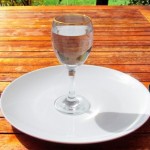

Intermittent fasting, or any fasting for that matter, is a tool.For most, it’s a tool that is used to reduce body fat.So in that sense, people use intermittent fasting for the purpose of losing weight, and more importantly for losing body fat.At this level, they are ‘purposefully fasting’, which is fantastic, however it is not my ultimate goal for you to take away from Eat Stop Eat.Learning that fasting can cause weight loss is one thing (and it is a great thing), but there’s another approach to fasting, and that is fasting WITHOUT purpose.This is my ultimate goal with Eat Stop Eat – to help you reach a point where you are no longer fasting to lose weight, but are fasting because you’ve realized that you really don’t need to eat at that time.In other words, I want you to progress from occasionally ‘fasting’ to occasionally ‘not eating’.That’s it.Accomplish that, learn to not eat when you don’t need to eat, and you don’t need any more weight loss or diet information. You no longer need to surf the internet looking for diet information, or new tricks to help you lose fat. Because in my opinion you’ve transcended this type of desperate approach to weight loss.If you can do this then I think you’ve reached what I consider to be the highest level of eating. You eat when you feel you need to eat, and you enjoy that eating. When you don’t feel like eating, you recognize that you don’t HAVE to, and therefore, you don’t eat.Sounds simple, but consider that the science of nutrition is becoming more and more complex everyday yet it still hasn’t really moved us any closer to understanding ‘HOW’ we should eat.So for me, this is the ‘HOW’. And it’s what I want for you – Understanding that it’s OK not to eat at the times you don’t feel like eating and that it is also OK to eat when you feel like eating.BPPS – I still fast for 24 hours once or twice a week, but I also practice the idea of ‘not eating’ when I’m not purposefully fasting. Tagged as: Brad Pilon, intermittent fasting, weight loss tools
Taken from:
Beyond Intermittent fasting | Brad Pilon's 'Eat Blog Eat'













 For now classes are 6pm and 640pm at 2840 Wildwood st in the Boise Cloggers studio.
Book your class NOW!
click this ==>
For now classes are 6pm and 640pm at 2840 Wildwood st in the Boise Cloggers studio.
Book your class NOW!
click this ==>








